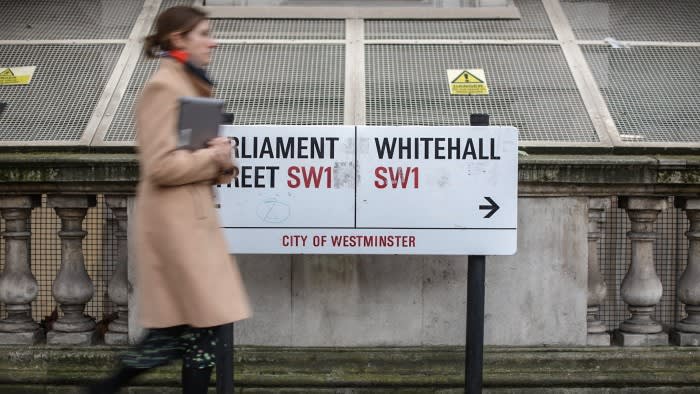Unlock the Editor’s Digest for free
Roula Khalaf, Editor of the FT, selects her favourite stories in this weekly newsletter.
UK civil servants must spend at least 60 per cent of their working hours in the office, the government has resolved this week as it reintroduces monitoring data on Whitehall working patterns.
Cat Little, Cabinet Office permanent secretary, wrote to other heads of departments on Wednesday setting out the fresh commitment to the target, according to officials.
The move comes after Whitehall chiefs re-examined the rule, first introduced in November last year under the Tories, and amid speculation that Labour ministers would allow more homeworking to bolster morale among officials after years of antagonism between the civil service and the previous Tory government.
Business secretary Jonathan Reynolds last month insisted that flexible working across the labour force boosted productivity and heaped scorn on a “culture of presenteeism”.
However, senior mandarins have decided that the target for civil servants to spend the majority of their time in the office was useful — a view shared by ministers.
“We care about outcomes rather than just having rules for the sake of them, but we think this is the right thing for the civil service,” said a government official.
“The minimum 60 per cent target is effective. It ensures people are in the office working with each other regularly. This is about being pragmatic.”
The move may come as a disappointment to some civil servants after recent job adverts indicated that office attendance could be as low as two days out of a five-day working week, rather than three days.
The 60 per cent target allows for civil servants to include time spent on official business — conducting site visits or engaging in person with stakeholders — as well as in the office.
Labour has rejected the heavy-handed approach to enforcing the target adopted by previous Tory ministers, which included Jacob Rees-Mogg leaving handwritten notes on empty desks in departments, a move attacked as passive-aggressive.
The commitment to the 60 per cent target comes alongside a decision to reintroduce publicly released monitoring data about civil service office attendance.
The publication online of weekly statistics tracking civil service working patterns was halted in the run-up to the general election in July and did not resume after Labour won — fuelling the idea that the new administration would be more flexible.
The official statistics will now be published quarterly instead of weekly and are designed to help mandarins understand if the civil service has appropriate desk capacity in its offices.
Labour has launched a reset of relations with the civil service since coming to power, with multiple cabinet ministers using their first “town hall” meetings with officials to stress that they valued the work of civil servants.
Pat McFadden, chancellor of the Duchy of Lancaster, who presides over the Cabinet Office, also made clear that he did not care about policing the lanyards worn by civil servants.
Former Tory Cabinet Office minister Esther McVey had criticised officials for wearing rainbow-coloured lanyards, which denote support for the LGBT+ movement, and claimed it was a form of “political activism”.
Other Tory frontbenchers had referred to Whitehall staff as “the blob”, a disparaging term suggesting that officials were responsible for resistance and delays to policy delivery.
The Cabinet Office said: “Heads of department have agreed that 60 per cent minimum office attendance for most staff continues to be the best balance of working for the civil service.” It added that the approach “is comparable to other large private and public sector employers”.



